6th April 2023
The Spokesmen Cycling Podcast
EPISODE 325: Benchmarking Bicycling: How Good Is Your City For Cycling?
SPONSOR: Tern Bicycles
HOST: Carlton Reid
GUESTS: Rebecca Davies, Malcom Davies (not related)
TOPICS: Drilling down into the cycling ranking system City Ratings from People for Bikes
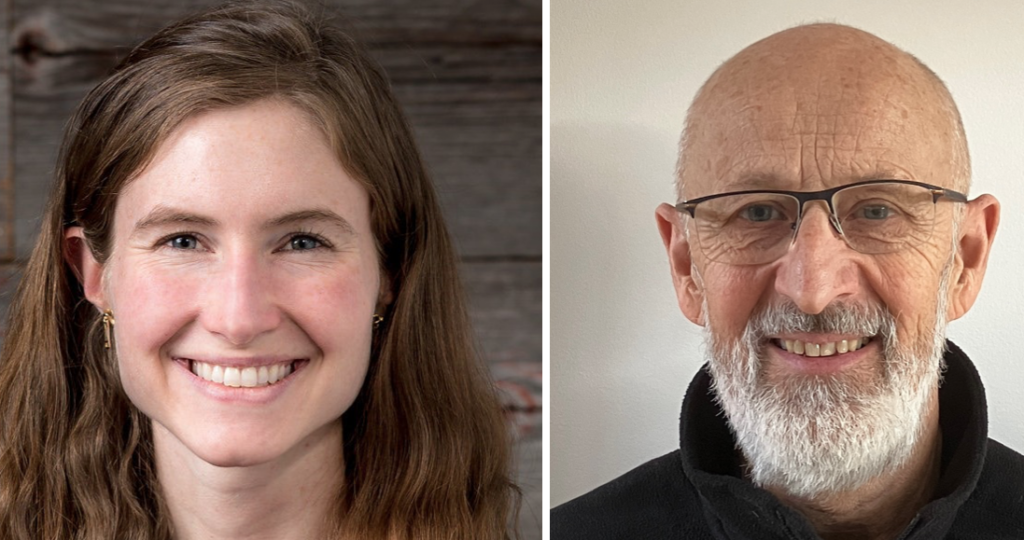
MACHINE TRANSCRIPT:
Carlton Reid 0:12
Welcome to Episode 325 of the spokesmen cycling podcast. This show was engineered on Thursday, April 6, 2023.
David Bernstein 0:28
The spokesmen cycling roundtable podcast is brought to you by Tern bicycles. The good people at Tern are committed to building bikes that are useful enough to ride every day, and dependable enough to carry the people you love. In other words, they make the kind of bikes that they want to ride. Tern has e bikes for every type of rider, whether you’re commuting, taking your kids to school or even carrying another adult, visit www.ternbicycles.com. That’s t e r n bicycles.com to learn more.
Carlton Reid 1:03
I’m Carlton Reid. And on today’s show, I’m talking bicycling benchmarking with Rebecca Davies, programme director of the cycling ranking system city ratings, which has been assessing the bicycling friendliness of cities since 2017. And that’s an international initiative from a US Bicycle Advocacy Group people for bikes of Boulder, Colorado. And joining Rebecca, from here in the UK, is bike industry veteran Malcolm Davies, of Trek based out of Milton Keynes. You two I’ve got a complaint to make. I don’t know who wants to take this. Malcolm who’s in the UK or Rebecca, who is in Boulder, Colorado, but my complaint is your website or the website for city bikes, the city ratings says put your city in here and get the details on it. I put Newcastle in and I got not a sausage. So I’d like to register a complaint. What do I do? What does Newcastle have to do to get on the city ratings programme to make cycling and Newcastle better?
Rebecca Davies 2:11
Yeah, that’s a great question. So we have an option on our website, there’s a form that says add my city. And anyone can navigate to that form and then enter a little bit of information about the city they want added. And then we take that into account when we update results in the future for the city ratings, so typically annually. So that would be the best way to get your city added. We try to add as many as we can. So there are limitations sometimes but but that’s the that’s the best way to do it.
Carlton Reid 2:45
Well, it is phenomenally comprehensive. I’m not really complaining. Because it’s something about Newcastle’s going to have to get escaped on and actually do because the comprehensive in that London is very comprehensively covered. And we will get on to that. But first of all, Jen and Rebecca, tell us who you are because you’re the program’s director for city ratings. Yes. People for bikes programme.
Rebecca Davies 3:09
Yeah, yeah, that’s correct. And the city ratings programme director, so I spend a lot of time on on the data, and both generating the data and helping people understand the data and working with my colleagues to communicate how the data connects to changes that cities can make to improve bike networks in their city.
Carlton Reid 3:34
Oone of your colleagues is Jen. So I do apologise for saying Jen in that reply to you because Jen, I have talked to them before. From from from from people, for buyers. So just for those who don’t know, what people promote, is you are an American organisation. So just give us a thumbnail sketch of what people provided. And perhaps more importantly, or as pertinent anyway, is when you get your cash.
Rebecca Davies 3:58
Yeah, so it’s kind of a two part answer to that question. So peopleforbikes is National Bike advocacy organisation based in the US. And we were both nonprofit organisation that does bike advocacy, and but we’re also a trade group for the bike industry. So we have over 300 industry members who support our work. But we’re supported both both by the both by the industry members and then also by grants and charitable donations that allow us to expand the scope of our advocacy work, including our data driven infrastructure analysis work represented by the city rating.
Carlton Reid 4:41
And Malcolm I know where you fit in here. But let’s you tell the listeners where you fit in here. What Why, why isn’t Malcolm Davies on this show with Rebecca?
Malcolm Davies 4:52
Yeah, sure. So so I’m Malcolm Davies. I’m a longtime Trek bicycle employee. Worked for trek since the early 80s. Early 1990s recently retired fairly recently retired. And I now look after advocacy and trucks initiatives around getting more people to ride and making it better for people to ride their bikes.
Carlton Reid 5:15
John Burke, Trek’s John Burke, has been a massive, massive bicycle advocate and pushing the industry forward with organisations like people have a bike. Is that a fair characterization? That that John was massively into advocacy before maybe other industry leaders were?
Malcolm Davies 5:36
I think that’s a reasonable characterization. Absolutely. Yeah. I think John has been a real presence in the industry for many, many years. You know, certainly, in my tenure, it was always something that he’s been very passionate about continues to be passionate about, continues to speak publicly about and tries to motivate the industry to do more to you know, to enhance the experience of cyclists the world over.
Carlton Reid 6:05
And Malcolm, you might be retired, but you will keep your finger on the pulse, you will know intimately that the bike industry is not exactly doing very well at the moment. So we need more bums on seats, we need more people to get on bikes probably than ever before, because because we’re kind of in the doldrums here.
Malcolm Davies 6:23
I think it’s an it’s an interesting time. I mean, I think we all know that the industry had a real uplift as a part of something that people could do during the COVID crisis. And then there’s been a bit of a lull since I think you and I have been in the bicycle industry in the UK and internationally for a long time. And we’ve seen these peaks and troughs many times before. They’re not they’re not unusual to us or many colleagues. That really reality is I think that if you look at the user data, people actually riding that has not dipped, people people went out and they maybe bought some bikes, but they literally apologise My dog is kicking off. So I think that people are out there riding bikes, and I think there is good usership data that shows that. So you know, let’s not get too disheartened that the industry is having a bit of a bit of a downturn having had a big boom, it will come back more people all over the world are seeing the bicycle as a good solution for their, their transport needs, their leisure needs, whatever it is, and they are they are using bikes and riding all the time, which is great, we want
Carlton Reid 7:28
more we might ask it on more but in your role, your Trek person or a bike,
Malcolm Davies 7:34
I am attracted I am try and employed by Trek to look after their European advocacy initiatives and represent track in various places in the industry,
Carlton Reid 7:45
and apart from Trek supporting and being a massive supporter of people for bikes was any greater involvement on the city ratings programme from track?
Malcolm Davies 7:57
Yeah, absolutely. I mean, I think that work, we work together I’ve worked for you know, over the last couple of years with Rebecca and the team in in the US to try and figure out a way that we can do what they’re doing in the US and make it useful and meaningful. So you know, we talked to right at the beginning about great deal of detail are in and around London, that was something that was very much driven by us and by me because I think you know, as you can imagine saying rating of London is kind of meaningless when you have such a big geographical space, both in terms of number of people who live there, but also the way that it’s structured. And you and I know that writing in one place in London is very different to writing in another and so I wanted to get into the detail a bit to make the analysis more meaningful to people and so we focused we focused our efforts on London we focused on the West Midlands we focused on for Manchester,
Carlton Reid 8:59
when all those cities have had put in have invested in bike infrastructure so Manchester with with the Beelines and Chris Boardman and all that kind of stuff. West Midlands with with a mayor is very proactive on on active travel and then of course London famously well starting with Ken Livingstone, then Boris Johnson and then the current Mayor Sadiq Khan is also pro so those those that’s the reason that you’ve gone for those cities. It’s not you know, low hanging fruit, this city could be great if they did this. It’s they’ve put an infrastructure, we’re going to focus on them.
Malcolm Davies 9:37
I don’t think that’s necessarily correct that we because they’ve put in the infrastructure because we know for a fact that some areas of London have put in the infrastructure and done an excellent job if we talk about Hackney or we talk about Waltham Forest, for example. But if we talk about you know, our friends, Royal Borough of Kensington and Chelsea we can clearly see though that they’ve done nothing and they’ve done their best to avoid it. So you know, There was some there was some considerable value in understanding the detail and being able to present the detail in a way that people could say, Well, look, look what happens here and look what the experiences are. You know, this is by no means. And I think Rebecca would certainly confirm this, we’re not, we’re not saying this is definitively how cycling is in a, in a, in a situation in a location, we are saying, Here’s his way of measuring what we currently have. And you can definitely challenge that measurement, you can definitely challenge that output. But it’s a way of making a comparison and seeing how things sit. We can also say, if you look at some of our scores, compared to many US cities, we’re we’re in pretty good shape. But if you start looking at you know, as we know, that cities in the Netherlands or in Denmark or elsewhere, on the European mainland, we’re we’re also way off the pace in many areas. So it’s a it’s a way of promoting a conversation or provoking a conversation. I should say that we’re looking at here. Started,
Carlton Reid 11:03
Rebecca, People for Bikes has been doing this since 2017. So this, this is basically an annual thing. So the information that’s on the website is current as of end of last year. Yeah. 2022.
Rebecca Davies 11:19
Yeah, correct. We updated results for the locations in the UK. It’s actually the beginning of 2023. But But, yes, yeah, we generally released results annually. And we had a separate release for US cities and other international cities in this past year, but in the future, we’ll combine those and release results and update them all at the same time, once a year.
Carlton Reid 11:49
Now, let’s get on to some American cities in a moment, but just kind of like sticking to European cities. See, you’ve got the number one is actually the Hague. So I’m going to you can tell me what this means. But I’ll just I’ll just say the numbers for now. So the Hague is just under 89. In the city rating, that’s out of 100, I’m assuming you tracked 84, Amsterdam 82. And then, you know, coming almost out of nowhere, rather, famously, is Paris, which has got 82, which is two, to hundreds of appoint a joke as close to Amsterdam, which is an amazing transformation that Paris has made. So in your tracking since 2017, can I go back? And can I graph Paris’s trajectory and see how in effect, they’re there, they’re about to overtake Amsterdam.
Rebecca Davies 12:47
So we unfortunately don’t have the international data for that whole span of time. Because when we started, we started with us smaller set of US cities. And then we grew that that number over a few years. And then just a couple years ago, we started adding international cities to the data. So we don’t have as much of a time horizon, unfortunately, for international cities, but it’s definitely something we’ll be able to build up now, as we update the results for these places annually. So we’ll get to start to see that change over time. Although we had, we have run Paris a couple times before. And you could see the improvement, you know, as it really tracks with a lot of the what we’re hearing, as far as you know, anecdotes and stories and reporting out of Paris about everything that’s being done. And I was lucky enough to have the chance to, to see a lot of that and I visited in late 2019 to see a lot of the change underway. So yeah, so it was it’s really been a great example of, of a place that’s that’s changing quickly. And is that is reflected in our city ratings scores, but it was just just under over a relatively short period of time.
Carlton Reid 13:59
I was throwing out just a whole bunch of numbers that which which in effect are quite meaningless at 84 is what what does it mean? What does 82 mean? Berlin’s got 77? Tell me exactly, I mean, looks like see, London has an average of 49. As Michael was saying, some borrowers are going to be much higher than that happening, you know, pleasantly high that but just generally what what are those figures mean? How do you get there? And and who was doing it? Who was physically looking at these, these data points?
Rebecca Davies 14:36
Yeah, so those are all great questions. So So there are two main inputs to our city ratings this year. And that’s a community survey where we asked people how they feel about bicycling in their city. But the biggest input is a metric from what a tool we have called the bicycle network. analysis. And we actually didn’t steal the community survey in all international places. But we did field it throughout the places we measured in England. So England has that combination of this community survey where we asked people what they think about bicycling where they live, and combine that with our our network analysis measure. But most of the other international locations, we just did the network analysis measure. So there’s a slight difference there. The network analysis was worth 100% of the score, for instance, in a place like the Hague, but worth 80% of the score in the boroughs and cities of England. So that’s just some context there. But as far as that network analysis, the bicycle network analysis, so what it is, is a piece of software, essentially, custom software we, we built, some years back, back in 2017, it was completed. And it essentially evaluates the quality and connectivity of bike infrastructure in a given area. Usually, that area is a city or borough that we’re looking at. So it’s saying, you know, given the conditions on the road, whether there are you know, how many lanes are there for cars? Are there safe crossings? What’s the speed limit? Is there any bike infrastructure, what kind of bike infrastructure, it takes all of those things into account, and then either assigns the street as low or high stress given those other factors. And then it of course, includes things pads too, that might be disconnected from the street, but are but allow bikes. So so it evaluates every single, every single path and streets throughout the given area? And then it says, Okay, well, well can people bike from where they live to places they need to go using only what we consider to be low stress or comfortable bike routes. And when we say comfortable, we really mean for the average person, not necessarily the average person biking today, but the average person in general. And we know there are a lot of people who don’t ride bikes, because they’re, they feel unsafe, right, because of the conditions on the road. That data, there’s not enough bike infrastructure, or it’s not sufficiently separated from motor vehicle traffic. And so, you know, they don’t get on a bike. So we want to think about what gets those folks on a bike. And so that’s the standard we want to use for what counts as comfortable, high quality bike infrastructure. So so it runs that analysis saying, Okay, if you start from the area, if people start from the area they live, and they want to get to their school, or their job, or the grocery store, can they make that trip on a bike, safely and comfortably, and if they can, the software rewards points. And if they can’t, it doesn’t, it can repeat this calculation over and over throughout a given area to get to eventually aggregate into this total score. For the whole for the whole region. So that’s essential. So a 100 in our network analysis would mean that you could start from anywhere in the city and get anywhere else using completely safe connected comfortable. bikeways that’s what that would mean. And in practice, we don’t know city scores 100. But the best get into the low 90s. Yeah, upper upper 80s. As we see here, yeah, almost almost 90. But
Carlton Reid 18:25
if Sorry, sorry. If if this was a motoring advocacy organisation, but imagine history is completely flipped. And, you know, bicycles are in the ascendancy and is the bicycle lobbyist groups who are doing this. If this was a motoring lobby organisation, do you think there are any cities that are at 100? For motorists, you think all cities are at 100? For motorists? Where is siping? In the pecking order? Do you think?
Rebecca Davies 18:56
I love that question. I’ve never received it before. And, you know, in some ways, it’s kind of interesting, because you might think, well, it’s the opposite. But that’s not really the case. Because there are we know that And research shows that when you make cities safer for people riding bikes, those improvements make cities safer for people who walk and people who drive as well. A lot of the improvements that that make a road safe are important for for people who drive too. So if we’re saying that a city that’s good for driving is a city that’s safe for driving, where we don’t have a lot of negative outcomes, you know, fatalities or serious injuries, then that actually that wouldn’t be you know, often some of the same cities that are good good for bicycling these things are not inherently at odds. Now I see. It’s the goal was Well, we, we don’t care about safety outcomes. All we care about is how fast somebody can get somewhere. You know, that’s a different that’s a different measure. But um, But even then, you know, having cities that move cars quickly, sometimes are also cities that have at times have a lot of congestion. So, by what by which I mean, maybe you have built your roads to make it easy for cars to go as fast as possible. But the reality is, if that means a lot of people end up driving, then that actually slows everybody down, because now everybody’s driving, and the car is congested roads congested. So
Carlton Reid 20:29
it, could you have a city, that’s 100, the motoring and 100 for cycling as well. I know this is all theoretical. But just think of it as like an experiment or a thought experiment. You know, could you have a city? That’s fantastic for motoring, and fantastic recycling at the same time in some sort of weird utopia?
Rebecca Davies 20:52
Yeah, yeah, I think so. Because it’s really at the end of the day, you want people to be able to move between different modes, safely and comfortably. To know that no matter what way they’re getting around, that it’s going to be safe. And they have efficient options, enhance efficiency, you know, whatever, whatever combination of modes that is, you know, you want them to be able to have an efficient trip. And I think, an efficient and safe trip. And so all of those things need to work together, all the modes need to be complementary in order for that to happen. So, so yeah, I think I think the ideal is a place where all of those things work together. harmoniously. Yeah.
Carlton Reid 21:37
So yeah, I’m thinking of, say somewhere like Los Angeles, but with loads of bike paths, so I’m gonna flip it to Malcolm. And because Rebecca, were kind of we read European, so we kind of probably have a slightly different perspective on you know, how you you kind of have cars and bicycles interacting on perhaps even mediaeval streets? So Malcolm, the same question to you really? Do you think you can have a hyper connected car city, just as the same as you got a hyper connected bike city? And could you even have that in Europe, considering you know, we’ve our cities are already built, and you probably can’t have that hyper connected car city.
Malcolm Davies 22:20
I think, you know, the word record didn’t use perhaps what was she was alluding to as balance isn’t it, you’ve got to find a balance between the different modes of transport. And that’s all modes of transport and all the all the ways people get around, from walking, to cycling, to cars, to public transport, if you really wanted to have a utopia city, let’s say all of those things would have to be in balance. And what you have right now, is an imbalance, right? Because you have, you know, access cars, you have x, you have congestion, you have inefficient public transport, you have inefficient and, you know, high risk, in many cases, in infrastructure not suitable for people to ride on. So I think you can, I think you can make a difference, you can massively improve the, the transport network for people walking and cycling, and even for public transport. But in order to do that, you are going to face the reality that you’re probably going to take some space away from cars from automotive. That doesn’t mean though, that you’re going to make it worse for for cars, because actually, what you’ll do by getting more people onto bicycles and walking and into public transport is you will take cars off the road, so there’ll be fewer cars, yes, there’ll be less space, but there’ll be significantly fewer of them. So you know, I, I actually think you can make a difference in that way. And I think there are a number of, you know, a number of examples all around Europe, they’re even examples in in in England, and the UK where that’s happening, and you’re seeing the benefits. And, and what you’re also seeing is that the people who live there, the residents really like it, they’re really they love it. They’re really happy with it. And when you don’t, you know, one of the things we always say is, do you ever see the people of Amsterdam or Copenhagen or Utrecht, asking to take away that bike paths? And I don’t think I’ve ever heard that happen. No one’s really doing that. And so there is there is value in that conversation. But it is a hard conversation, because you are starting from a premise that if you want to make more bicycle infrastructure or walking infrastructure, you’re probably going to have to take some space away from automotive.
Carlton Reid 24:34
Rebecca, that’s kind of not what you were saying. But do you want I do want to come back to that one, because because what Malcolm is saying you need to take space away from motorists. And you were saying no, you can have you can have both you can have great motoring infrastructure and biking at the same time. To
Rebecca Davies 24:47
be fair, that might be there might be a difference between Europe and the US.
Carlton Reid 24:52
I would like to tease that out. Exactly. I’d like to find out. Is that a European perspective and me and Malcolm come at this at a different way, Rebecca. And do you come at this from a US perspective? So, so talk me through that.
Rebecca Davies 25:07
Yeah, I, you know, I completely agree with everything Malcolm saying, and I think it is true. We have roads in the US that are far too wide. Even some of our neighbourhood streets are just absurdly wide. It’s, it’s kind of crazy how wide some of our streets are. And we know that wider streets lead people to drive faster, which results in poor safety outcomes for all road users. And so we do need to rethink, rethink how we reallocate space. And you know, I’d even argue a city that we definitely think of as a very car centric City, Los Angeles. And it’s true that it can be hard to get around without a car there. It’s not necessarily a great city for driving, I’ve lived there. And I’ve spent, you spent a lot of time sitting in traffic on highways, and there are a lot of roads that are pretty frightening to drive on. And it’s not always very efficient to drive. And, in fact, often it isn’t, but it’s just your only choice. So I don’t think it’s a city that’s working well for cars, either. And it would it would be just such a fabulous city for bikes, you know, if it had the bike infrastructure it needs it’s it’s flat, it’s sunny, it’s beautiful. It’s actually quite densely populated. Despite despite being spread out, in many ways, it’s, there’s a lot of high density in certain parts. But yeah, I mean, I definitely think that conditions are different, you know, because a lot of US cities were built, when, you know, the car was already around and access growing, you know, growing and accessibility. As far as affordability to a lot of people, a lot of cities were built around cars and really subsidised driving and continue to subsidise driving through how the city is designed. So I think there’s a difference that way and kind of what we’re starting with, and, and I’m envious of cities that were of the cities that you know, developed. to a greater extent before, you know, cars were was widespread because some of their conditions are better suited for more multimodal transportation. But But I definitely agree that there has to be a reallocation of space. In order to achieve that that correct balance, it’s very imbalanced in a lot of cities that have given 90 Over 90% of the travel space to driving alone. And that hasn’t resulted in great outcomes, it’s resulted in congestion. It’s resulted in lack of choice for people when they you know, really their only option is to drive. Yeah, and I wouldn’t say it’s, it’s not it’s not making for an efficient system. So, yeah, so I think I think we’re very much aligned on on that. And, and then and the needs in that regard are similar between cities around the world. But there are certainly different starting points, given that a lot of cities have very different kind of designs.
Carlton Reid 28:04
For sure, now, I know that on your website, you talk about road diets. So you know, that’s that’s something that is, you know, what you’re talking about there about, you know, reducing road weights, can you have some very wide and we’re gonna be talking about stroads, and what and what that means to a European, which we’ll, we’ll probably don’t come across that term as much as an American does. But first of all, I’d like to go across to my colleague for an ad break.
David Bernstein 28:28
Hello, everyone. This is David from the Fredcast. And of course, the spokesmen. And I’m here once again to tell you that this podcast is brought to you by Tern bicycles. The good people at Tern build bikes that make it easier for you to replace car trips with bike trips. Part of that is being committed to designing useful bikes that are also fun to ride. But an even greater priority for Tern, is to make sure that your ride is safe, and worryfree. And that’s why turn works with industry leading third party testing labs like E FB, E, and builds it bikes around Bosch ebike systems which are UL certified for both electric and fire safety. So before you even zip off on your Tern, fully loaded, and perhaps with the loved one behind, you can be sure that the bike has been tested to handle the extra stresses on the frame, and the rigours of the road. For more information visit www.ternbicycles.com to learn more, and now back to the spokesmen.
Carlton Reid 29:39
Thanks, David. And we’re here with Malcolm Davies. And we’re here with Rebecca does not relate to you. So no, no. The same second name completely different geographic. Okay. Just just to get that settled. Now, before the ad break, I was asking, Rebecca, about stroads and rode diet. So first of all, for anybody who’s who’s unfamiliar with that term strode, Rebecca, can you can you tell us what that means?
Rebecca Davies 30:09
Sure, yeah. So a stroad is the idea that, you know, you have some roads are built, or in theory are built more for moving cars more quickly, like a highway, that has limited access, where there aren’t many ways to get on the highway, you know, there’s, there’s on ramps here and there, but you can’t, it’s not that, you know, not every street allows you to access that highway, might cross under it or over it, but doesn’t necessarily get you on. So there’s there’s limited access roadways, and then their streets, which tend to be in more densely populated areas, and our, you know, facilitating travel for shorter distances and slower speeds. So, you know, these are places that maybe maybe it’s a street grid, with lots of intersections, and so there’s a lot more activity on streets. And the idea with a stroke is that it’s a kind of unfortunate combination of both of those things, and not achieving either of their aims very well. It’s a road that’s built in many ways, like a highway, and that it’s supposed to try to move cars quickly through an area, but it’s not limited access, it has a number of intersections with other streets. And so so you end up with this, this sort of the worst, worst kind of combination, where it’s quite dangerous, because it’s built for moving cars quickly, but it actually might have a decent amount of activity it might have, you know, shops or residences along the street and intersections along the way, a lot of intersections, and those often might not have very safe controls on them. We see there quite a few roads in the US that don’t have don’t even have sidewalks. So, or if they if they do the distances between crossings are so far that people just crossing the middle of the street, you know, they could be crossing a 567 lane road. And that’s very, very dangerous. So yeah, so they just make for a really both inefficient and kind of unsafe type of roadway. And that that hasn’t decided whether it’s a street or a highway.
Carlton Reid 32:19
And does the road diet does that cure a city of stroads Is that something that is anti stroad?
Rebecca Davies 32:27
and it’s can help rethink you know, what that space is meant to be? I think it’s important for people to be intentional about what that road needs to become. Whether it’s that usually Yeah, get turning it more into a street and thinking about what its main purposes, you know, is its purpose to move cars quickly, or is its purpose to help people travel locally in the area and support the surrounding land uses. And it’s the land use piece, I think is really important there to you know, how you build cities along these roads. And so it’s both about reallocating that space in a thoughtful way, and implementing other safety improvements. So it might be that you reduce the width of the road, you convert lane, one lane that isn’t needed into a protected bike lane, for instance. But there are other improvements to like slowing, like changing the speed limits or adding more safe crossings, so people don’t have to so people don’t have to cross in the middle where there is no crossing. So there’s a variety of ways to improve it to improve that kind of roadway. But certainly some of these overbuilt, overly wide strobes. You know, they just have so much excess capacity that rethinking how some of that space is used is is often an important step.
Carlton Reid 33:52
I want to come back to Malcolm in a minute, and we can dig down into some of the city ratings for for the UK cities. I’m mostly familiar with Manchester and worth, obviously with London, not quite as familiar with Birmingham. But first of all, I’d like Rebecca to talk to you about it because you’re in Boulder, Colorado. I’m assuming I haven’t looked at the figures of your city ratings on on your website. But I’m assuming you’re in the top city in the US are certainly in the top three. And if I had to name the top three cities in the US in innovative hospital, if I wasn’t out to North America, then I’d also add Montreal but if I’m just going purely for the US then I would choose Boulder, Colorado, Davis, California, and Portland, Oregon. As as the top three cities and I know Portland, Oregon, has kind of faltered in the last few years. I know Davis, California has you know, obviously was was incredibly, very bicycle friendly in the 1960s 1970s and for various reasons. Hadn’t been quite so busy. And that Boulder, Colorado is the one that’s taking off is that, again, is that characterization that I’ve just said there does that does that reflect any form of reality at all?
Rebecca Davies 35:11
Those are definitely all leaders, I would say, a lot of boulders, but builders, it is a good city for bike by US standards. And a lot of its network of paths was actually built a few decades back. So it got a bit of a head start. It will say, you know, Boulder has a lot of these kinds of roads that that need to be addressed in the same way other US cities do, you know, these kinds of arterial roads that like we were talking about with strokes that are, too Why don’t have enough safe crossings aren’t really safe for biking. So it has plenty of those. The city actually recently introduced a plan to focus specifically, their their transportation work on those arterial roads, because we know those are the ones with the worst outcomes, and that people don’t feel safe biking on, however Boulder has the benefit of having invested in a network of off street paths a few decades back, and continue to build upon that path network. So so if you’re travelling places that are along that path network, you know, you can have some really wonderful, you know, bicycling opportunities, and experiences, the challenges those, those paths don’t go everywhere in the city. So So, so definitely, it’s a leader, but also still has plenty of work to do. Similarly, Davis invested, you know, was an early leader and investing in their bike, a bike lane network and has continued to do so. And so that’s reflected in our city ratings. And, and I do, we do generally, generally try to compare across cities of similar sizes, because they have both because of how the analysis works methodologically it’s, it’s it, for instance, small cities tend to score a little higher in the ranking. So that’s just something to keep in mind when you compare between cities that are a very different size. But yeah, among larger cities, Portland, definitely one of the leaders in the top 10, but it has it it is it is behind some other large cities in the US. Its neighbour to the North Seattle has in the last few years just kind of crept ahead by a few points in our rankings. And so you know, it’s kind of fun, fun, when you can kind of pull that sort of friendly competition out of the data and see how cities, you know, move together or how one moves ahead, and Seattle’s kind of pulled ahead in in recent years, San Francisco is also a bit ahead of ahead of Portland at this point, but
Carlton Reid 37:44
any other cities that are totally maybe people that obviously heard of the cities, but wouldn’t put them down as a, you know, an up and coming bicycling city? Any surprises in the data?
Rebecca Davies 37:57
You know, it’s a good question. There’s, there are some cities that are doing all the right things and are making great progress, but aren’t very high in our rankings. And that can be because, because, you know, they’re they’re very much in there, their work is underway. But also some of them are starting from a harder starting point. So for instance, Austin, Texas, is a city doing a lot of great work to build out their bike network. But you know, the city also started from a tough place in terms of you know, it’s a very, it’s a very large city that’s experienced a tonne of growth, and has a lot of starting from a very car centric infrastructure landscape. So has the cities built some phenomenal, some phenomenal bike paths, and we’ve seen them climb up in our ratings, but but because they’re starting from that, such as tough spot, and and, you know, a lot of their momentum has been more recent versus cities that might have done some of their investments some decades back, you know, it’s just not as apparent because they’re not, they’re not in the top 10. And it’s going to take a long time for a city like Austin to get to the top. But there’s a lot of great progress being made.
Carlton Reid 39:13
Okay, let’s come over to this side of the pond. And let’s talk to Malcolm about Malcolm, how much are you familiar with let’s let’s rather than talk about London and Manchester, which I’m familiar with. How familiar are you with West Midlands? And what’s been happening there?
Malcolm Davies 39:32
reasonably but not not massively, I would say. Yeah, I mean, obviously, there’s there’s quite a good amount of effort going on. There. Isn’t there there is
Carlton Reid 39:43
politically that I mean, I’m sure that comes up at high on any rankings is when you’ve got the political leadership taking an interest. Well, that’s that’s the absolute critical step you need. So West Midlands has that?
Malcolm Davies 39:56
It does. It does. And that’s undoubtedly making something roads, but it also shows up that they probably are only really just getting started. So you’re not necessarily going to see that in the data. I mean, a Coventry is a good example that I used recently in another conversation where they scored pretty low in Coventry in the birthplace of the bicycle as we know it. I know for a fact that there is there are some really good things going on in that in that city and in that part of the West Midlands,
Carlton Reid 40:26
but it’s what we have, as the, as the Adam Tranter, who’s kind of doing great things. But you’re right, it’s it’s from a low start
Malcolm Davies 40:36
it Yeah, exactly. But, you know, this is not a definitive statement of what your community or city is necessarily doing. It’s, it’s a way of measuring where things sit. It’s almost like a snapshot, snapshot in time. If and I think you’re right, right, right. Right back to the beginning, when you talk talking about Paris, if we looked at you and I and perhaps went to Paris 10 years ago, and, you know, tried to get on a bicycle in it, and pre the bike share system that they had, even when they had it for quite a while you took your life in your hands. And it’s only in the recent past when you’ve seen massive infrastructure investments, but initiatives on the part of Anne Hidalgo, the Parisian mayor, that huge transformation. So I think we have to be very conscious of those kinds of conversations when we’re saying to a community or a city hall that you only scored 30. Too often. For me. This is a snapshot in time. It’s a challenge in a way it’s so it’s a way to start a conversation, which is, which is all you need here.
Carlton Reid 41:49
Malcolm Well, we both came in into the industry when I mentioned before about John Burke being being a champion of bicycle advocacy because that’s now a mainstream in the industry is that what you do in the UK Bicycle Association is hugely into into Bicycle Advocacy. But these organisations when we came into the industry, we’re not anywhere near as in touch with with bicycle advocates as they are now. So my question is, from an industry perspective, do you see do you think you can you can track where there’s lots of good built infrastructure, you sell more bikes? Can you get as granular as that? Or is that just too hard to track?
Malcolm Davies 42:33
I think we can get that granular on what the industry lacks is where bicycle jobs and bicycle sales, because that’s what we’re talking about, where they where they have enough data and enough data in detail to match that into geographical space. I think we’re actually quite fortunate in the UK in as much as the Bicycle Association, Great Britain has a very good set of data that they’ve been working on that that does describe very well where, where the bicycle economy is. And I think that’s quite valuable. So overlaying that kind of data with, you know, the data that that Rebecca is presenting here, or being for bikes presenting here will be will be interesting. And we need that’s the next kind of phase of the kind of work we need to do. Because I think we know politically, of course, economy matters. You know, that’s what politicians want to have a successful community, they’re going to have to have a strong economy. And if we can,
Carlton Reid 43:34
you can line the two maps up. You could say, Look, if you put the infrastructure in the industry support infrastructure or support, advocacy, in general, this leads to a recognisable uptick in sales.
Malcolm Davies 43:47
Yes. I mean, and what in some ways that can be a negative for the industry, right? So I can sit in a room with a with a bunch of local politicians and say, we should have more bicycle infrastructure. And the first thing they’re going to say to me is, well, of course, you’d say that because you want to sell more bikes. It’s been interesting for me, one of the things we did here was we rated Milton Keynes, because that’s our hometown, but there’s track in the UK, that’s our hometown. And I’ve had a couple of conversations with local politicians in the room. And you know, the community of who has a vested interest in cycling, and it and it sparks a conversation it it talks, it gets people talking about okay, well, how do we improve the infrastructure from an active travel standpoint, which is really what we care about. And what does it mean to to the economy? What does it mean for our for our community for us, its people who live here.
Carlton Reid 44:40
Rebecca, I know that Trek does have its fingers very heavily in the bike share pie in many US cities and perhaps even worldwide, but just talking about bike share in general because because Paris if you if you kind of like try and work out where did Paris is Bike revolution come from? Well, many people, myself included would would certainly put Velib. You know, when the when the bike share was put in that seemed to have some sort of transformation. Just getting more bikes more visible, because many more people because it was made Democrats, Democrats, bikes, you can get more people on bikes with a bike share scheme, is that something that ranked highly in city ratings, if a city has a bike sharing, it’s guaranteed to get X number of points, and it will lead to some sort of exponential rise in cycling overall.
Rebecca Davies 45:38
Yeah, so we currently the ratings does not include measures related to bike share or other access to bikes themselves, we actually used to include more measures in our city ratings, we had a variety of data sources we use to measure multiple different facets of bicycling, which is really interesting to see this sort of different views. But we found a couple challenges. And one of the main ones was that when you you’re measuring bicycling, and a lot of different ways, when you want to talk about well, how do you improve your score, it ends up being quite a long list of things you could do to improve your scores. And there are you know, I always say there’s 1000 Ways to Improve bicycling, you know, but you kind of have to focus on a few at a time to really, it’s really kind of centre, your, you know, sending your work and, and be effective in a given area. And so we decided to make our city ratings very narrowed and focused on the infrastructure in a city or the infrastructure on the ground, not not including Bikeshare stations. So but we do actually, as an organisation, we have a programme called the better bike share partnership that is focused on bike sharing, specifically equitable access to bike share, so ensuring that the way Bike Share functions, it is accessible to all kinds of people throughout the city. So we definitely recognise that as important part of the whole kind of ecosystem and bicycling. And similarly, another another piece we don’t measure, but that we know is so important is bike parking, just the availability of bike parking. And, you know, I would, I would love to see a similar ranking system that’s for bike parking in cities, sort of what am I dream extensions of this? One day? But yeah, but we did the readings is very, is very focused on infrastructure on the ground, because we wanted to communicate that that is a major priority, and that we’re not going to see the kinds of shifts in vice clean that we want to see until you know that infrastructure gets built. But that said, we recognise all of these things are very complementary and important to just supporting people in enabling them to, to, to ride so yeah, so definitely very supportive of cities that aren’t investing in their bike share systems, as a way to help get get more people riding
Carlton Reid 48:05
that before, you’re also saying that you’ve only got a certain amount of international data here. So you obviously started to 70, with with American cities, and you’ve been growing with the European statistics. So this is maybe a tough question for you to answer. But the city of Seville in Spain, rather famously, almost overnight, not quite overnight, almost overnight, you know, lay down a bicycle network and in your ranking systems, you wouldn’t weren’t doing it that when they were doing it, but if they hadn’t been doing it, when you were doing your rankings, they would have gone, you know, from this very low score, presumably to a very high score in the space of you tracking over a year. So do you see any indications that there are potentially more Seville’s out there, cities that are willing to just flip and just completely change overnight? Or do you think this is going to be a very long term over 30 years? Kind of timescale?
Rebecca Davies 49:24
Yeah, you know, I want to say there are tonnes but there, you know, there are a few there aren’t that many. There are a few that are kind of positioned like Seville to to make a quick change. And I think annual Paris does, again come to mind is just one that’s that’s really made that kind of rapid pace of change. But then there’s a lot that are looking at these longer, these longer time horizons. And actually, a lot of our work some of my colleagues work that’s complementary to mine is to work with cities that show That promise towards being able to make rapid change, and, and help provide them tools and resources to get on that different trajectory to get on that, that faster trajectory. Because we know that there are a few things that that help cities kind of move from that long term horizon to that shorter term horizon. And that’s, you know, building political will, that’s supporting advocates, so that they can hold leaders accountable. And also supporting changing public sentiment so that people understand why these investments are being made, and how it will benefit them over time, so that they’re supportive of the project. And then of course, finding the dollars if they aren’t there. I mean, the dollars to invest in the infrastructure, so you have to have all the right ingredients come together for that kind of rapid pace of change. And we’re definitely seeing that in a few cities known the US that, that movement towards that. And, and some cities that have made a lot of progress in a relatively short period of time, but, but if they don’t have the political will, the political leadership there to do that, you know, it’s it’s, it’s very, very hard, if not impossible to move at that that rate of change. So it’s really important that that groundwork is laid, and I’d say, a lot of places that have the potential to move quickly are in that political will building capacity building stage, but they’re getting closer, definitely getting closer. And, and, and there, there are a few cities, I can think of that we are seeing a relatively good pace of change. So Cambridge, Massachusetts has done a lot of work around implementing policies to build out there to support building out their bike network and investing the financial resources, they need to do that. And we’re and we’re seeing that change happening, you know, their score is going up. And so you see those kind of signs of places that are starting to move more quickly. And I’m hopeful that in 510 years, you know, we’ll we’ll have a few more of those examples like Seville that that have have have proven they can make a lot of change in a relatively short period of time, but still more places in that sort of groundwork phase, and we’re working with a few cities to try to try to get them on that faster growth trajectory.
Malcolm Davies 52:24
Call? No, I would, I would add, I would add to that, that there are cities in England for sure that you see quite significant mood for change. You know, I’m thinking about Oxford, for example. It’s not part of the ratings. But, you know, you’re seeing you’re seeing political will there, you know, make change quickly. Even some of the London boroughs in Hackney, Hackney didn’t used to be a great place to be a cyclist and it seems to come out of the out of that in the very recent past. So, I think there is, there is traction there. And there are examples all over the place of things can can be better and when they are made better, people want that they like it.
Carlton Reid 53:04
Okay, that’s a very positive note. I’m going to end there. Thank you very much to Malcolm Davies and to Rebecca Davies. Not related. We kind of like established that used to collect a genetic test you just never know some some common ancestor so thank you ever so much for spending the time talking to me today about the City Rating scheme Rebecca where can where can people find out what’s give me the website basically of where people can find out about where their city or where they can complain as I started where how they can complain to get their city on the city rating system?
Rebecca Davies 53:44
Yeah, thanks. City ratings at peoplefor bikes.org is the website where they can see all the results. And yeah, submit that and my city form to us and we’ll try to get to get their city ranked next time we update the results.
Carlton Reid 54:02
Thanks to Rebecca Davies and Malcolm Davies there and thanks to you for listening to episode 325 of the Spokesmen podcast. Show notes and more can be found at the-spokesmen.com. In the next episode, already in the can, I talk philosophy and cycling with authors James Hibbard and Max Leonard but meanwhile get out there and ride.
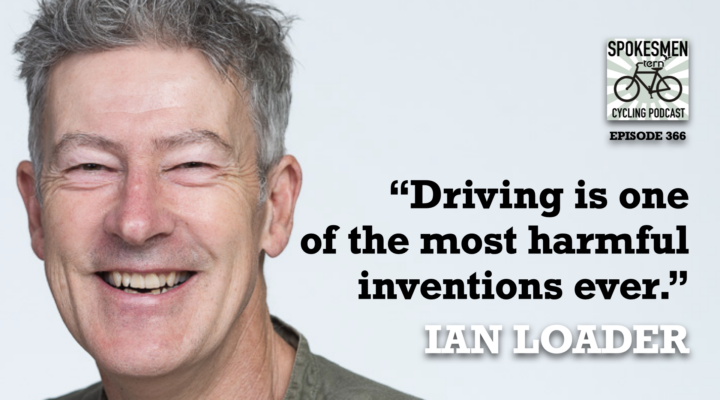
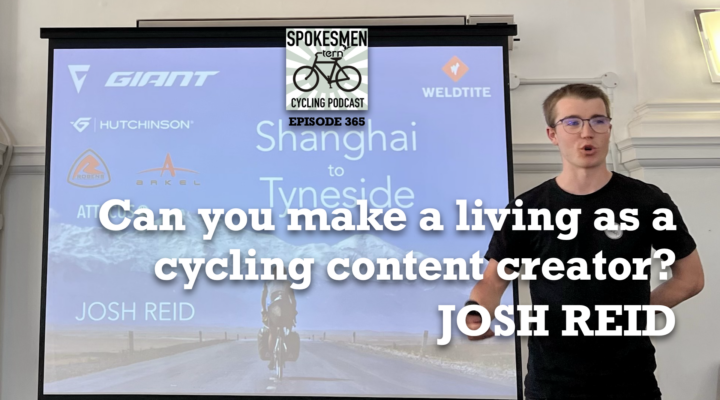
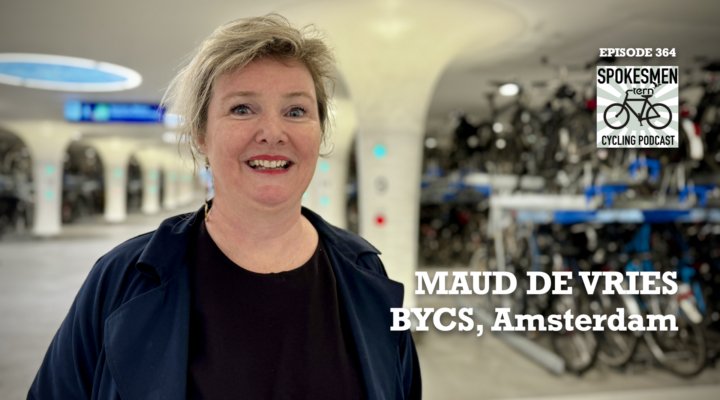
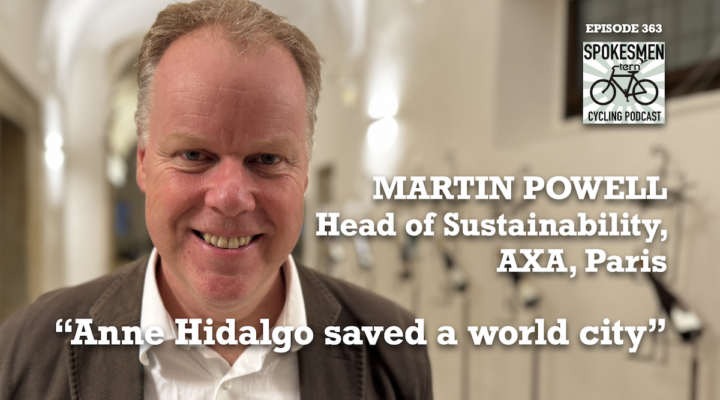
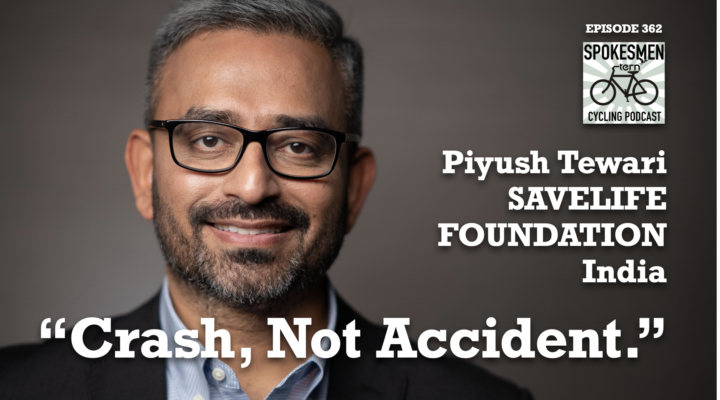
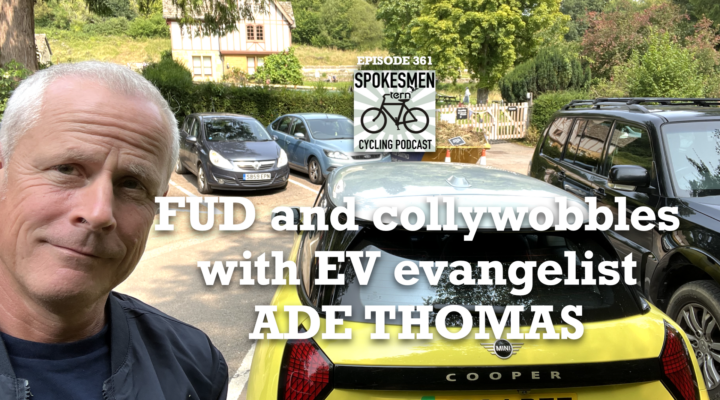
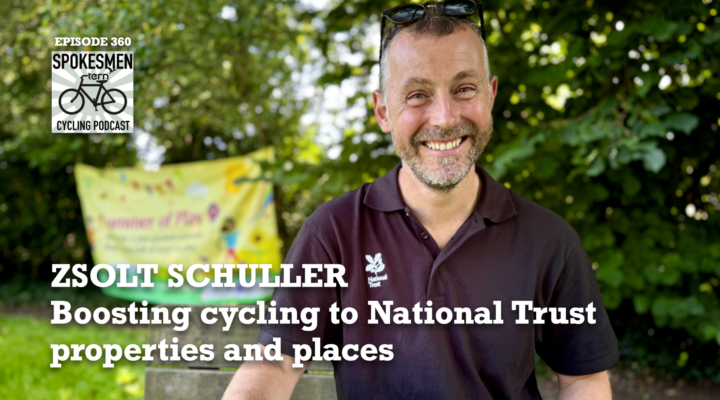
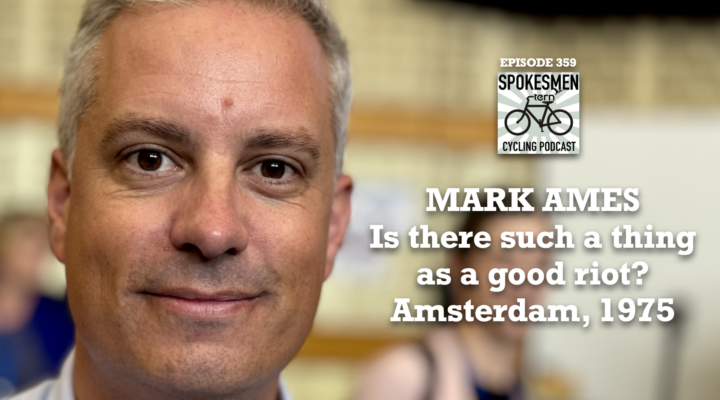
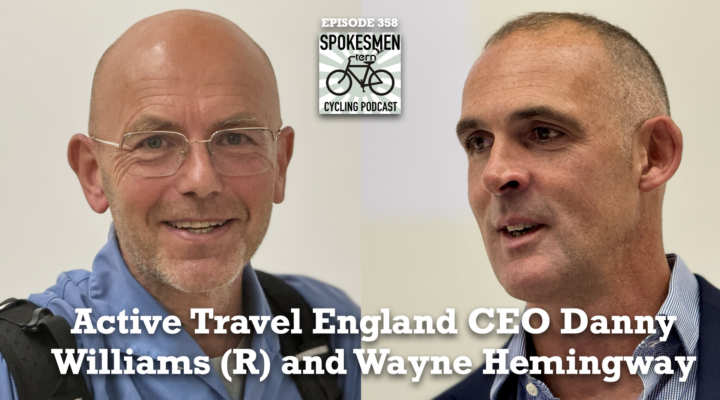
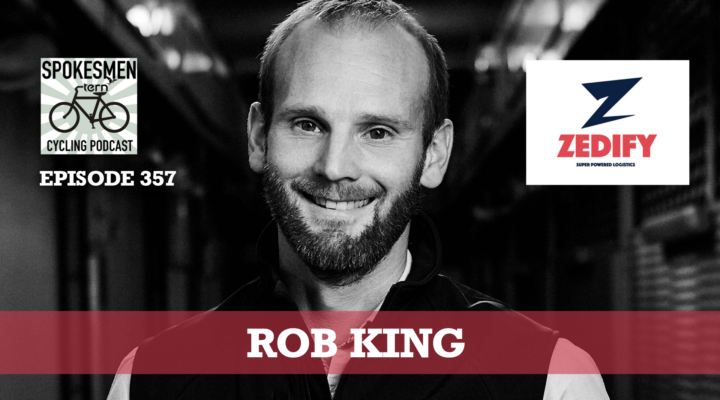
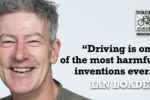

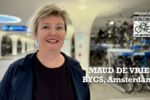
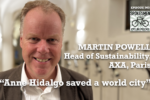
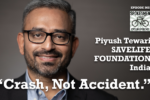


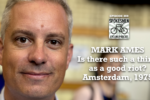


Be First to Comment